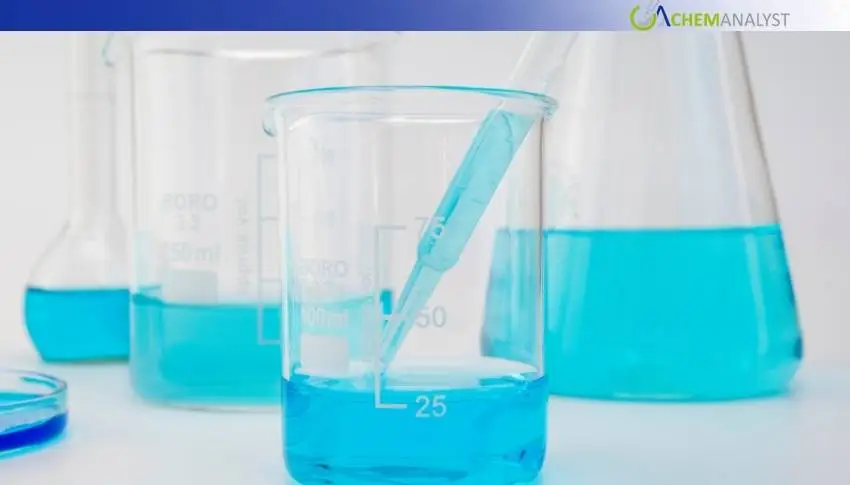Welcome To ChemAnalyst

The blog on Global Epichlorohydrin Supply Chain provides a concise overview of the production routes, key raw materials, major exporting and importing countries, and logistical challenges shaping global trade. It highlights the dominance of Asia, especially China, in production, the role of glycerin and propylene in feedstock sourcing, and the impact of environmental regulations and freight dynamics on supply continuity and pricing.
Introduction
Epichlorohydrin (ECH), a highly reactive chlorinated epoxy compound, is central to the production of epoxy resins and a wide range of industrial applications. As global demand for high-performance materials in sectors such as electronics, automotive, aerospace, and renewable energy continues to grow, ECH’s role has become more critical than ever.
In 2024, global ECH production capacity reached approximately 3.2 million metric tons, with Asia leading the charge. However, shifts toward greener production routes, tightening environmental regulations, and evolving trade dynamics are beginning to reshape the ECH supply chain in profound ways.
What Is Epichlorohydrin and Why Does It Matter
Epichlorohydrin (ECH) is a colorless, highly reactive organochlorine liquid with a distinctive chloroform-like odor. It is used primarily as a chemical intermediate in the manufacture of epoxy resins, glycerol, elastomers, water-treatment chemicals, and specialty adhesives. Its ability to bond strongly and resist heat, chemicals, and mechanical wear makes it indispensable in industries like aerospace, automotive, electronics, and pharmaceuticals.
Key Applications
1. Epoxy Resins – 90% of global ECH output is utilized here, for coatings, adhesives, composites in construction, automotive, aerospace, and electronics.
2. Synthetic Glycerol – Niche use when high-purity glycerol is required despite an excess biodiesel byproduct supply.
3. Water Treatment, Ion Exchange Resins & Elastomers – Specialized chemicals and rubber products.
4. Pharmaceutical Intermediates & Specialty Polymers – Growing niche end-uses in pharma and high-performance materials.
Global Production Landscape
Key Producers
o Major chemical players: Solvay (Belgium), Boruta-Zachem (Poland), Dow, Sumitomo, Lotte Fine Chemical, Aditya Birla.
o Asia-Pacific leads production (60% of capacity in 2023)
Top ECH Producing Countries (2024):
China alone contributes around 40%, with major plants in Jiangsu and Shandong provinces. Other notable producers include the United States, Germany, South Korea, and Japan.
• As of 2024, below is the market share of key ECH-producing countries in the form of a pie chart:
Top Exporters and Importers
• Export Hubs:
• Import Leaders:
Trade Dynamics
In 2023, the largest exporters of refined ECH included China (33%), Chile (42%, primarily via bio-based routes), Thailand, and the Netherlands.
Key importers were South Korea, Germany, Poland, and Sweden, all of which host large epoxy-resin manufacturing facilities.
Key Supply Chain Elements
1. Feedstock Sources
o Traditional route: propylene → allyl chloride → epichlorohydrin.
o Emerging route: glycerol-based process (GTE), leveraging glycerol from biodiesel.
Here is the graph attached for production processes in different countries:
2. Production Facilities
o Advanced plants by Dow, Solvay, Lotte, and Sumitomo.
o Partnerships (e.g., Momentive & Aditya Birla) to secure ECH supply for resin production.
3. Logistics & Transportation
o Involved: raw materials (prop chlorides, glycerol), ECH processing, storage in pressurized vessels, shipping (tankers, containers).
o Key export ports: Hazira (India), Nhava Sheva, Houston.
4. Regulatory & Safety Issues
o Classified carcinogen, requiring strict handling and emissions controls.
o New “green” routes like glycerol-to-ECH reduce environmental impact and regulatory burden.
Common Supply Chain Challenges
• Feedstock Volatility – Propylene, chlorine, and glycerol prices fluctuate.
• Environmental Regulation – Emission standards penalize traditional routes; green processes are still scale-limited.
• Logistical Bottlenecks – Infrastructure is limited in developing markets; handling hazards complicates transport.
• Geopolitical Risks – Trade disruptions, tariffs affect trade flows similar to LPG dynamics.
The Green Transition: Bio-Based ECH
• Bio ECH from glycerol is gaining traction; it reduces reliance on petrochemicals, aligns with sustainability goals.
• Growing adoption is driven by environmental regulation and strategic positioning among leading producers.
What to Watch Going Forward
• Diversification – Scaling the glycerol route and investing in new plants to reduce dependency on petrol feedstocks.
• Infrastructure Expansion – Improving storage/transport, especially in APAC and emerging economies.
• Policy & Regulation – Incentives for green chemistry and tighter emission rules to shift production routes.
• Tech Innovation – Catalyst improvements, process efficiency, and bio ECH scaling will define competitiveness.
Conclusion
The global ECH supply chain is a robust, complex ecosystem intersecting petrochemicals, green chemistry, global trade, and strict safety regimes. Its resilience and evolution—especially through bio ECH—mirror shifts in broader chemical and energy sectors. For deeper insights on production economics, regional market breakdowns, and strategic forecasting, ChemAnalyst would be a great partner.
For detailed supply chain models, pricing trends, and demand forecasts, get in touch with ChemAnalyst.
________________________________________________________________________________________________________
“Epichlorohydrin is no longer just a chemical intermediate; it’s a strategic enabler of high-performance materials driving innovation across clean energy, electronics, and sustainable manufacturing.” – Senior Analyst, ChemAnalyst.
FAQs
Q1: What makes transportation of ECH hazardous?
Shipping ECH requires specialized pressurized containers and strict safety/unloading protocols due to flammability and toxicity.
Q2: Is ECH a sustainable chemical?
Traditional ECH is fossil-based, but bio ECH from glycerol offers a lower-carbon, greener alternative that can use existing infrastructure.
Q3: How does ECH price volatility impact downstream industries?
ECH costs influence epoxy resin pricing, impacting sectors like automotive, construction, electronics, costing, and planning.
We use cookies to deliver the best possible experience on our website. To learn more, visit our Privacy Policy. By continuing to use this site or by closing this box, you consent to our use of cookies. More info.
